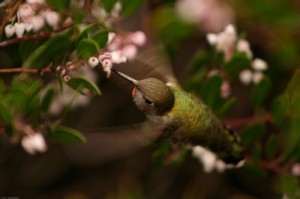While having lunch today with a group of ladies from my church, we began having a discussion about hummingbirds and winter. This discussion let me know that many people are misinformed about hummingbirds in the winter. Because of my knowledge and love of hummingbirds, I was able to set the record straight concerning these common misconceptions regarding winter and hummingbirds. It is also what has inspired me to write today’s post and I hope that it will enlighten and entertain you.
The normal ratio that is recommended for making homemade nectar solution or sugar water is 4:1. This means four parts water to one part sugar. However, in the winter it is alright to change the ratio of your nectar or hummingbird solution to a ratio of 3:1. I make this point because many people are not aware of this and mistakenly believe that the ratio of nectar solution must always be 4:1. This simply is not true and by changing to a ratio of 3:1, you will be helping to retard the freezing of the nectar solution.
Many people also mistakenly believe that by leaving their hummingbird feeders up in winter that the hummingbirds will not migrate. It is the length of day or photoperiod is what signals to the hummingbird that it is time to migrate and this will occur regardless of whether or not your feeder remains up or not. In other words, the hummingbird will know instinctively when it is time to migrate and the feeder staying up will not stop this.
Many people also mistakenly believe that all hummingbirds must migrate, especially in the colder temperatures of winter. This is not true because not every species of hummingbird migrates. There are also those hummingbirds that are too weak or ill to make the migratory journey any longer or you could have a vagrant hummingbird in your area that is off the path of its journey. These hummingbirds will need to be fed, so it is important that they have a food source available on which to feed.
This is the common misconceptions my friends had about hummingbirds in the winter. If you yourself held any of these misconceptions, I hope that this post has served to inform you on this matter.

